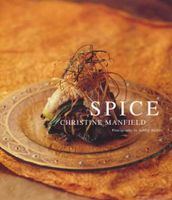Advertisement
Saffron
Appears in
Published 1999
Each autumn a single purple crocus flower yields three orange-red stigmas, which are picked laboriously by hand and then dried to make saffron. It takes roughly 20 000 stigmas to make up a mere 125 g saffron, hence the luxury price tag. However, saffron is an essential ingredient in any self-respecting spice cupboard. Thankfully, because of its intense qualities, a little goes a long way (for maximum flavour, however, make those pinches generous ones).
Saffron has a sweet, floral aroma and slightly bitter flavour that underlies its distinctive and penetrating spiciness. There is no substitute for it as a spice or colouring agent. Saffron can be used in savoury and sweet preparations and is integral to such dishes as France’s bouillabaisse and rouille, Italy’s risotto Milanese, Spain’s paella and zarzuela (a seafood and saffron casserole), Iran and Iraq’s saffron rice, and India’s rice pilaf and kulfi, as well as numerous breads, pastries and cakes from the cuisines of the world. It is also an important ingredient in the making of yellow chartreuse (a French liqueur that is light and sweet on the palate) and in perfumes, and is used as a dye for cloth (it is a sacred colour for Buddhist monks). Saffron was valued as a heart tonic in ancient Persia, and its fragrance was thought to induce sleep. It has also been considered an aphrodisiac and a cure for flatulence and poor vision. In India it is used to treat digestive and urinary tract disorders and as a skin remedy.


